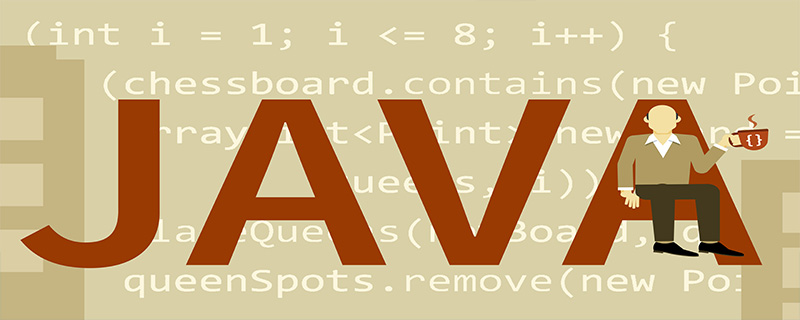Home >Java >JavaInterview questions >Collection of classic Java interview questions (7)

1. Let’s talk about the difference between ArrayList and Vector
(more recommended interview questions: java interview questions)
1. Synchronicity: Vector is thread-safe. Use synchronized to achieve thread safety, while ArrayList is thread-unsafe. If only one thread will access the collection, it is best to use ArrayList because it does not consider Thread-safe, the efficiency will be higher;
If multiple threads will access the collection, it is best to use Vector, because we do not need to think about and write thread-safe code.
2. Data capacity growth: Both have an initial capacity size and use linear continuous storage space. When the number of stored elements exceeds the capacity, the storage space of both needs to be increased, and Vector grows. Double the original value, ArrayList increases by 0.5 times the original value.
2. Why is the ArrayList thread unsafe?
The operation of adding elements to the ArrayList is carried out in two steps, that is, the first step is to Store the elements to be added at the location of object[size]; in the second step, increase the value of size by 1.
Since this process is not guaranteed to be atomic in a multi-threaded environment, ArrayList is thread-unsafe in a multi-threaded environment.
(Related tutorial recommendations: java introductory tutorial)
3. What are the differences between HashMap, LinkedHashMap, and TreeMap?
1. HashMap is the most commonly used Map. It stores data according to the hashCode value of the key. Its value can be obtained directly according to the key, and has a very fast access speed. HashMap only allows the key of one record to be null, and does not allow the value of multiple records to be null.
HashMap does not support thread synchronization, that is, multiple threads can write HashMap at the same time at any time, which may lead to data inconsistency. If synchronization is required, you can use the Collections.synchronizedMap(HashMap map) method to make HashMap synchronized.
2. Hashtable is similar to HashMap, except that it does not allow the recorded keys or values to be empty; it supports thread synchronization, that is, only one thread can write to Hashtable at any time. However, this also leads to Hashtable will be slower when writing.
3. LinkedHashMap saves the insertion order of records. When traversing LinkedHashMap with Iteraor, the record obtained first must be inserted first. It will be slower than HashMap when traversing. Has all the features of HashMap.
4. TreeMap can sort the records it saves according to keys. The default is in ascending order. You can also specify a sorting comparator. When using Iteraor to traverse a TreeMap, the records obtained are sorted. The keys and values of TreeMap cannot be empty.
4. How to remove duplicate elements from a Vector collection?
Use the Vector.contains() method to determine whether the element is included. If it is not included, add it to a new collection. It is suitable for cases where the data is small.
There is also a simple way to traverse the Vector and put in set, SortdSet, HashSet, etc.
(Video tutorial recommendation: java video tutorial)
5. What are the characteristics of the three interfaces List, Map, and Set when accessing elements? ?
1. Duplicate elements are not allowed in Set
Save elements:
The add method has a boolean return value. When there is no such element in the set, For an element, when the add method can successfully add the element, it returns true; when the set contains an element equal to an element equals, the add method cannot add the element at this time, and the return result is false.
Get elements:
There is no way to tell which number to get. You can only get all the elements through the Iterator interface, and then iterate through each element one by one.
2. List represents a sequential collection
Storing elements:
When the add(Object) method is called multiple times, the objects added each time are sorted in the order of first come, first served. , you can also jump in the queue, that is, call the add(int index,Object) method to specify the storage location of the current object in the collection.
Getting elements:
Method 1: The Iterator interface gets all the elements and iterates through each element one by one.
Method 2: Call get(index i) to clearly indicate which index to take. Use this interface to precisely control the insertion position of each element. Users can access elements in the List using the index (the position of the element in the List, similar to an array subscript), which is similar to Java's array.
3. Map is a double-column collection
Storing elements:
Use the put method, put(obj key, obj value). Each time you store, you need to store one For key/value, duplicate keys cannot be stored. The duplication rule is also based on equals comparison.
Get elements:
Use the get(Object key) method to obtain the corresponding value based on the key. You can also get a collection of all keys, a collection of all values, and a collection of Map.Entry objects composed of keys and values.
List holds elements in a specific order and can have duplicate elements; Set cannot have duplicate elements and is sorted internally; Map saves key-value values, and value can be multi-valued.
The above is the detailed content of Collection of classic Java interview questions (7). For more information, please follow other related articles on the PHP Chinese website!